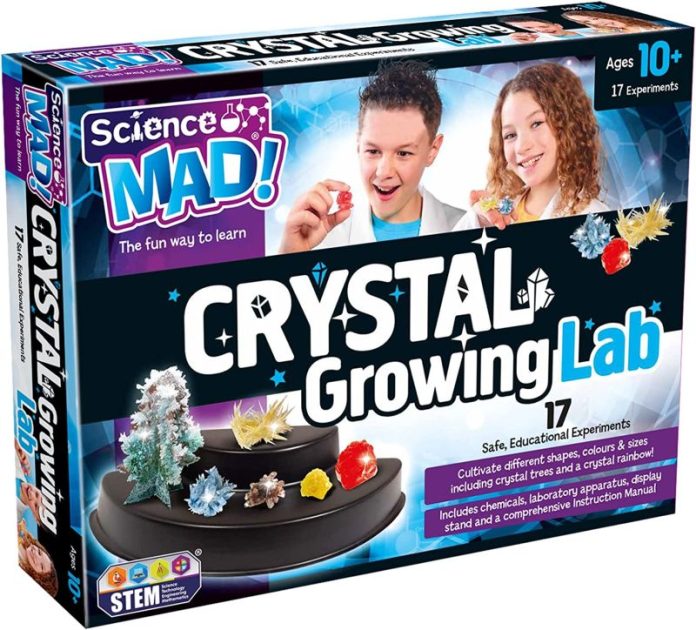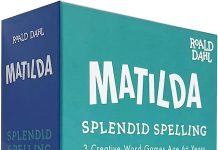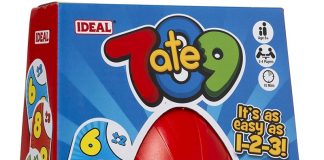We love the kids playing with toys and games and if they have some educational value to them as well, all the better – you can never learn too much, no matter what age you are. With Christmas fast approaching everybody will be looking for the perfect presents and we have also been looking for things that the children will enjoy and possibly learn something new from. In the past we have tried a couple of Science MAD! educational sets with the Rock Tumbler and the Weather Station and enjoyed them so this time we thought that we would try out the Crystal Growing Lab.
The Science MAD! Crystal Growing Lab is a hands-on science kit that lets children learn about and grow their own different colours and types of crystals. Not only do children get to make and display their own crystal creations but they can learn a bit about science in a fun way.
In the box:
- Chemicals
- Food Colouring
- Laboratory Apparatus (measuring cups, moulds, dishes etc.)
- Display Stand
- Instruction Manual
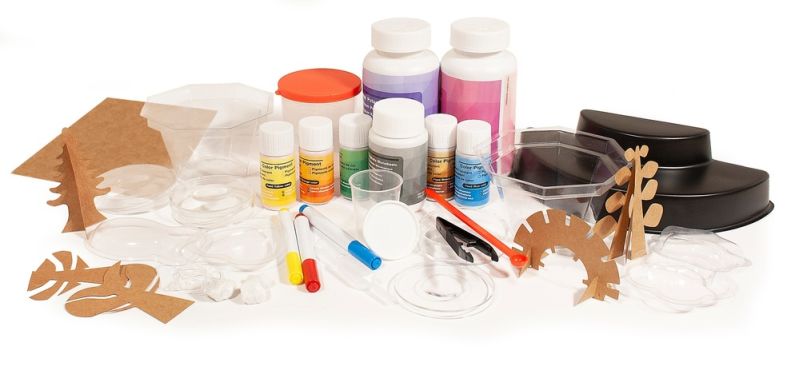
The Science MAD! Crystal Growing Lab is a STEM product, science kit that is suitable for children aged 10 years plus, which for us was great as it meant that both kids could join in, although adult supervision is required (they are working with chemicals after all). The kit that we received was able to carry out 17 crystal growing related experiments using the very comprehensive instruction manual.
The kit has mostly everything that you need to complete all 17 experiments: 3 large pots of chemicals (Ammonium Dihydrogen Phosphate, Potassium Phosphate and Aluminium Phosphate Sulphate), 5 smaller pots of food colourings (yellow, orange, brown, blue and green), various science lab apparatus including petri dishes, blister moulds (star, heart, animal and flower), 2 measuring cups, stirrers, a dropper, granite seed rocks, thread, a small spoon, water-based marker pens (red, yellow and blue), pots, tweezers and various pre-cut paper shapes, a results table, a display stand and an instruction booklet.
As with a lot of these types of kits, extra equipment will be necessary to complete the experiments. Most of these extra components are generally things that you have in the house (items such as a pencil, jam jar, paper clip etc.). That said, the instructions also wanted Epsom Salts and Plastic of Paris – who has them lying around the house? I know we don’t. Despite not having these we were still able to carry out a number of experiments (it turns out they are required for 3 of the 17 experiments available). No safety googles or gloves are supplied which is a shame (we did have some from other kits so wasn’t a problem – you can still do the experiments without them, we just preferred having them for safety reasons and what little scientist doesn’t like looking the part?).
The kit itself is good. All the bottles are clearly labelled and all with different coloured labels to make it easier (great for reducing mishaps or making your crystals the wrong colour). The plastic moulds and the display stand are rather flimsy but do the good they are supposed to do very well, whilst the mixing dishes and measuring cups are much more substantial.
Before starting any experiments, read the instruction manual first. Not only does it contain detailed and comprehensive instructions on the 17 experiments available and how to make your crystals in different shapes and colours, but it also explains how crystals were formed during the creation of the Earth and gases cooled, also explaining how crystal shapes are classified. It is a very informative read and great for expanding knowledge and gives a better understanding of the crystals that you are going to make. As for the experiments, there are detailed instructions that show how all the apparatus is used and the step-by-step diagrams show easily how to do the experiments.
Following the instructions to make the crystals is straightforward by following the detailed guide, although you do need to pay attention and age of 10+ with adult supervision is probably correct. It can be time consuming as you have to wait before you can continue on to the next steps and several hours or days waiting for crystals to grow. You can make crystals in different shapes, sizes and colours including a heart, star, fish as well as a crystal Christmas Tree or rainbow (the use of watercolour pens and paper helps create the tree and rainbow). Once the crystals have formed, they can be proudly displayed on the stepped display stand.
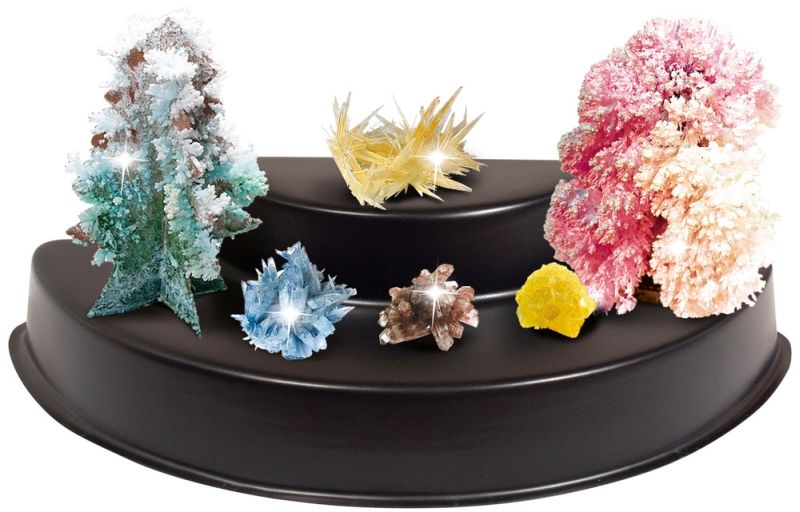
Whilst the crystals are growing, the fun doesn’t stop there you can use the results table to note your findings in your experiments and how your crystals are growing, just like a real science lab.
Overall, the Science MAD! Crystal Growing Lab is an excellent little kit with plenty of crystal growing experiments to carry out. It is certainly a fun way to learn more about science and chemical reactions and helps to promote an interest in the sciences.
The detailed instructions make it fun easy enough to follow with adult supervision, and the results are great. The only downside is that not all the items needed to complete all the experiments are included – the household items of pencil, paper clip and jam jar aren’t a problem, and I wouldn’t expect them to be included but I would expect things like safety googles, gloves, Epsom Salts and Plaster of Paris to part of the set. The Epsom Salts and Plaster of Paris are needed to complete three of the experiments so you will have to purchase these separately or not do those experiments, and the inclusion of safety equipment (goggles and gloves) should be a must (in my mind anyway) to promote the safe use of chemicals (there are warnings not to let the chemicals touch you skin) and instil that safety first is a priority before carrying any experiments from these types of kits. That said, it is still a good fun and interesting kit that everybody enjoyed, and it would make an interesting gift for curious minds and science loving children this Christmas.
If you are purchasing as a Christmas gift, maybe add some safety goggles, gloves and the Plaster of Paris and Epsom Salts so that all the experiments can safety be completed and carried out in safety straightaway.
A fun way to learn more about science in a practical way.
Rating: 4/5
RRP: £19.99
Available to buy from www.smythstoys.com.

